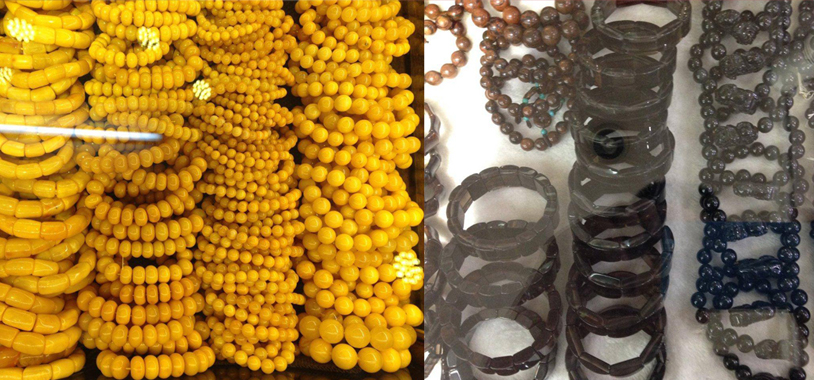Elephant Conservation Tour in China – June 10 – Guangzhou
This was the day I had been waiting for, the day I would finally see where all the elephants I knew had gone after they had met their horrible deaths: the visit to the ivory market. We started off going into obscure antique shops on the side of a busy highway. The first was intricately carved mammoth ivory. I recognized immediately that it was indeed mammoth by the distinct patterns on the cross section. Then we headed into an elephant ivory shop. The lady employed in the shop was reserved at first, but Gao charmed her, and like a snake dancing to Indian pipe music, she began to tell us about her frustrations. Her nephew was starting university soon, and instead of thinking about his poor background wisely, he picked a course that would never make him much money. She wished he had chosen better. He could even go to the carving school, and soon live a dream. This industry has a future. She kindly offered us seats, and showed us the most beautiful, meticulously carved art I have ever seen. “Be careful,” she said, “it is very expensive” she said to me as I held a $6000 piece. All the work in the shop had certificates attached; this shop is legal. But she did admit that sometimes, someone took the daunting risk of getting ivory from “other sources”. I left the shop with confused feelings fighting within me: such beautiful art, but such a great cost.
Then we wandered into an open plan shopping mall, to kill time I thought. Here we saw some of the most beautiful gems and precious stones. We started off looking at orange coral, then ambled into a section with jade. It all looked like glass bangles to me, brittle and pretty…then we asked the price of the greenest bangles we could see displayed (simply) like sweets in a corner shop. RMB 800,000 was the answer. Our jaws dropped open. This is over $100,000… For a bangle!! “Yes” replied the unblinking shop lady. This is the price of something valuable.
We then saw amber, my favorite stone – with the transparent kind always containing some organic substance, well preserved. For me, it is a window into the past, maybe even hundreds of thousands of years. This was the most expensive, sold per gram, sometimes over $40 a gram. We saw many other stones, including ivory, which in comparison, was rather low-end. It took me a while to figure out that this was the “ivory market.” I now think we should stop using this name altogether.
Many thoughts run through my mind at the memory of this experience. First, I wish to corroborate a Chinese current saying concerning this issue, which is that the ivory price is “not high.” Because ivory is sold in this market with all these other gems, in comparison, its price is rather low. The only difference I know, is that it has a high potential for price increase compared to the rest, wherein lies the first problem. Second, I wish to make an admission: walking through this market, all I saw were stones. Even I who works with elephants every day found it difficult to make the connections between this white stone – among green, blue, orange, yellow and red ones – and it’s origins. [Perhaps those who make a living bashing the “unfeeling” people who sell this need to take a trip here so we can speed along our quest for a common understanding.] I now see how complex this issue is, to recognize that out of all these colors thrown together, only one is the proof of killing. In this, I almost despair.
But I find hope quickly again. It is true that if this “stone” disappeared from this colorful market because the last elephant was killed, the market would not change much. But in the same breath, if this white stone vanished because the trade ended, the same would be true. It is not as big a deal here as we have believed. And for this reason, it can be changed.
Related Elephant Conservation Tour in China blogs: June 8, 2014 June 9, 2014



